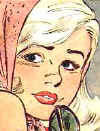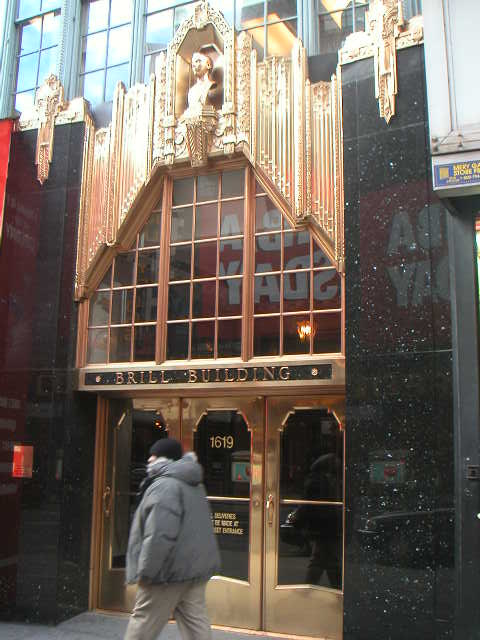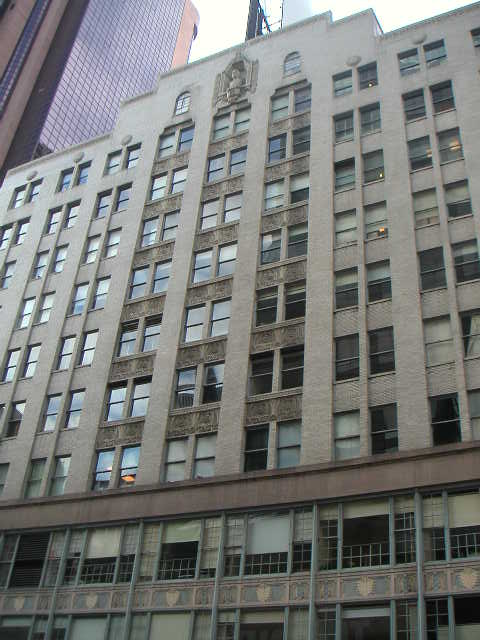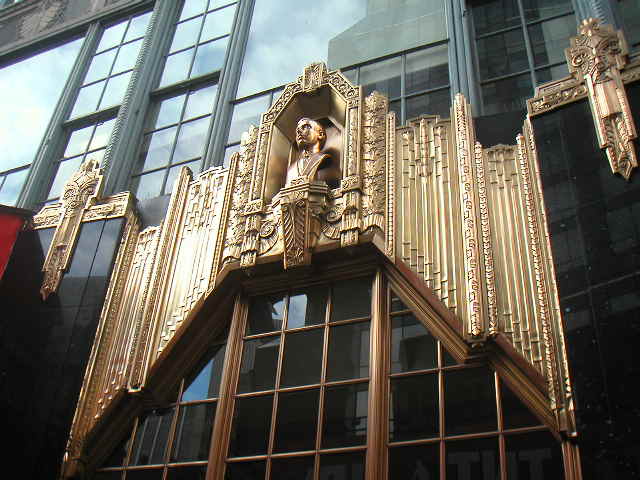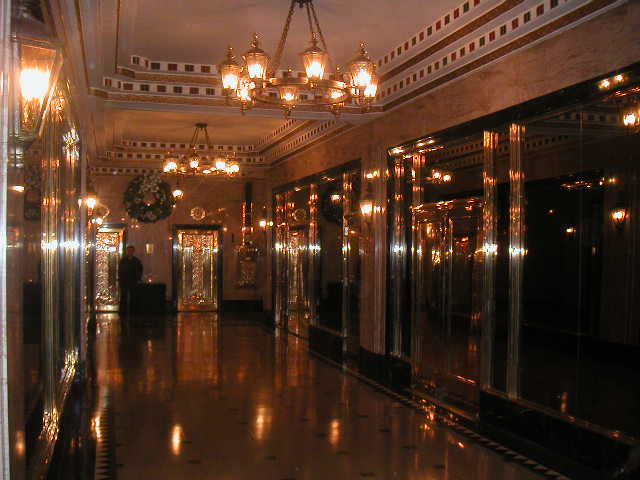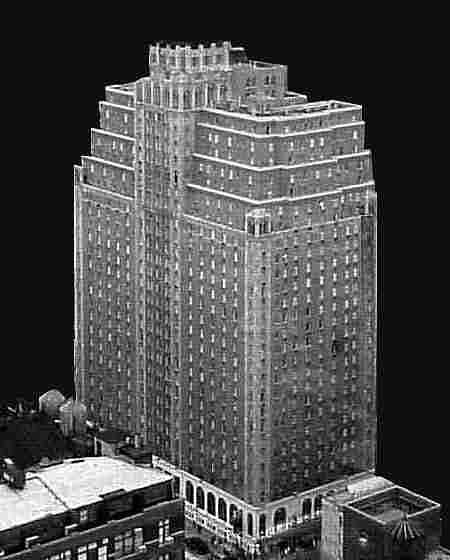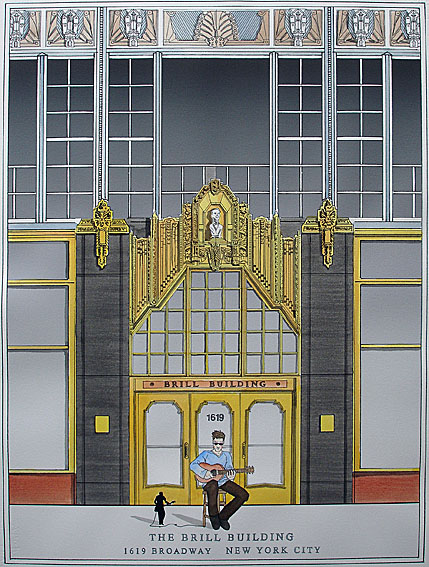|
 The Brill Building
The Brill Building
When Neil
Sedaka's Breaking Up Is Hard To Do became the artist's first
Number One and ninth consecutive hit, the music business knew it had
to sit up and take notice of a significant new phenomenon - The
Brill Building.
Sedaka was
one of a close-knit group of songwriters and performers whose work
was becoming known as Brill Building Pop, after the building at 1619
Broadway, New York, where many music publishers had offices.
It was said
in the 30s and 40s that Tin Pan Alley was located just across the
street from the nearest dollar. This new Tin Pan Alley could be
located more precisely because in effect, the Brill Building had
become a production line for quality pop music, much of it under the
guidance of one man, Don Kirshner.
Kirshner's
first experience of the music industry had been in an unsuccessful
song writing partnership with the equally unknown Robert Cassotto
(who later changed his name to Bobby Darin and became a bona-fide
teen idol).
Kirshner
decided to take the energy of rock music and re-apply the
old-fashioned Tin Pan Alley disciplines of craft and professionalism
to the art of marketing hits for the youth market. With new partner
Al Nevins he formed Aldon Music - One of their first signings was
the song writing duo of Neil Sedaka and Howie Greenfield whose
Stupid Cupid provided a hit for Connie Francis in 1958.
|
As a solo
performer Sedaka then turned out Oh Carol, Calendar Girl, Happy
Birthday Sweet Sixteen and a string of others.
Sedaka's
ex-girlfriend Carole King was also brought onboard as a songwriter,
on a wage of $75 a week (along with her current beau, Gerry Goffin).
She was soon pumping out hits including Will You Love Me
Tomorrow? for The Shirelles, Take Good Care Of My Baby
for Bobby Vee, Crying In The Rain for the Everly Brothers,
and The Loco-Motion for Little Eva.
Kirshner's
next coup was a liaison with Barry Mann (writer of Who Put The
Bomp?). Teamed up with Cynthia Weil, the duo quickly scored with
Bless You by Tony Orlando, Uptown for The Crystals,
and You've Lost That Lovin' Feelin' for Phil Spector
protégés, The Righteous Brothers.
Describing
conditions in the Brill Building, Mann revealed "Cynthia and I work
in a tiny cubicle, with just a piano and a chair, no window. We go
in every morning and write songs all day. In the next room Carole
and Gerry are doing the same thing, with Neil in the room after
that. Sometimes when we all get to banging pianos, you can't tell
who's playing what".
And Aldon
Music wasn't the only publisher in and around the Brill Building.
Successful song writing teams Leiber and Stoller, Pomus and Shuman,
Bacharach and David, as well as individuals like Phil Spector and
Gene Pitney could all be found plying their trade at the Brill or
very nearby.
|
The Look of
Love: The
Rise and Fall of the Photo-Realistic Newspaper Strip, 1946-1970
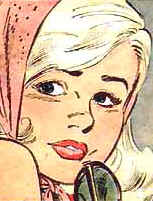 The
well-crafted pop song. Think Brill Building at 1619 Broadway in
the early 60s and its Aldon Music counterpart across the street at 1650.
Lieber and Stroller. Phil Spector. Barry Mann and Cythnia Weil. Gerry
Goffin and Carole King. Hal David and Burt Bacharach. In the
tradition of the Great American Songbook, of Tin Pan Alley and Broadway,
these artists fashioned tremendously successful product that was
commercially sophisticated, elegant and simple, adult and
youthful in its pleasures. The
well-crafted pop song. Think Brill Building at 1619 Broadway in
the early 60s and its Aldon Music counterpart across the street at 1650.
Lieber and Stroller. Phil Spector. Barry Mann and Cythnia Weil. Gerry
Goffin and Carole King. Hal David and Burt Bacharach. In the
tradition of the Great American Songbook, of Tin Pan Alley and Broadway,
these artists fashioned tremendously successful product that was
commercially sophisticated, elegant and simple, adult and
youthful in its pleasures.
These composers before
Lennon and McCartney and Dylan were for the most part urban postwar kids
who had grown up across the Hudson and could see the Manhattan skyline
from their bedroom window. They loved traditional music forms but
infused with rock and roll spirit, youthful melodrama, swelling chords
and soaring melody.
The music they created was
under appreciated for years.
|

|
|
Our Man Rip It’s with real regret that
one realizes dailies used to look this good and may never
again. Alex Raymond, who had already once before revolutionized
comic art, manages the feat again with the evocative Rip
Kirby. Once, he had followed Matt Clark and John La Gatta
to create the sensual figurework of
Flash Gordon. Now the visually acquisitive Raymond turned
to the Cooper Studio fashion and advertising artists for
inspiration. High adventure, drama, romance came in a
spectacular daily blend of lush blacks, varied line work, and
bold composition. The late John Prentice ably continued on for
43 years after Raymond’s death in 1956, the strip lasting until
June 1999. |
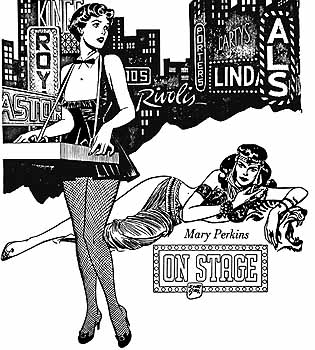 Once,
there was the well-crafted story strip too. Once,
there was the well-crafted story strip too.
In Post War II America, mass
entertainment was in flux. Americans were restless. While Hollywood
vainly counterpunched with huge Technicolor Biblical epics, stark black
and white Film Noir and The French New Wave became the cutting edge in
film. Be-Bop intellectualized Jazz. The contrasting trends were
everywhere in fine art and Pop Culture. There were Free verse and the
Beats. Rock and Roll. Elvis. James Dean. Brigette Bardot and Bikinis. In
most media, Photo journalism was now king. Narrative radio was on the
way out and TV was on the way in. Readers, accustomed to years of the
immediate impact of visuals from newsmagazines, wire photos, and
newsreels, wanted real but a heightened reality set in the drastically
changed world around them.
American Illustration was changing too.
The first comic artist to show the new order was a familiar name for
innovation, Alex Raymond. He adapted for his new post War strip, Rip
Kirby, design concepts from the Charles E. Cooper Studio, concepts
which gave the impression of spur of the moment visuals --thereby
beginning the advent of romantic deep-focus realism to the pages of the
nation’s newspapers. New York art services which used comic strip
style ads, the most famous Johnstone and Cushing, made the Sunday paper
a line art billboard for a variety of products, ironically the work
looking more and more like the photographs they recently replaced. The
Poloroid instant camera, introduced in 1947, made photographed based
figure reference convenient and economically possible for artists on a
deadline and budget. For places and props, artists turned to, again
ironically, to huge clip files culled from the same magazines which had
used to feature hand-drawn illustration.
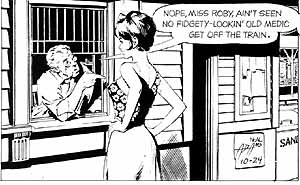 It
was a matter of career timing as well. It
was a matter of career timing as well.
The comic book and comic strip industry
had undergone some major shifts. Most likely the first of the
photographic, contemporary dress strips was Elmer Wexler's little seen
Jon Jason in January 1946 about an artist in South America, as it
shows (in the few panels I've seen) the move away from brush-inked
Crane-Caniff-Sickels impressionism which marks the old style,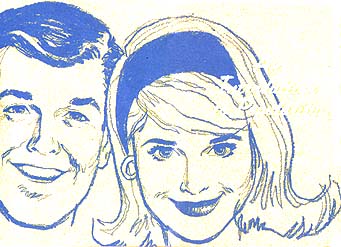 with Rip following three months later in March. (When
Jason
faded, Wexler ran to Cushing where he would stay long enough to pass
along his secrets and frustration with the form to a kid named Neal
Adams.)
with Rip following three months later in March. (When
Jason
faded, Wexler ran to Cushing where he would stay long enough to pass
along his secrets and frustration with the form to a kid named Neal
Adams.)
But there wasn't an immediate rush to
follow in Raymond's large footsteps. That took the mass exodus of
young second generation comic artists out of comic books in 1950 to
advertising and Madison Avenue. It was in these crucibles, among
them one headed by Lou Fine as well as the celebrated Cushing with Al
Dorne in its stable, where the young artists learned the discipline and
craft they would bring back to comic strips.
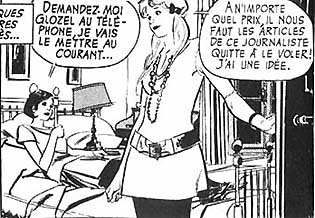 There
was no doubt that strips were where the action was. Comic strips were
still the high ground in the 50s. Not only were these artists
after Raymond following his lead by going to strips, but a nationally
syndicated strip was by far the most lucrative venue for a comics
artist. After Stan Drake makes his smashing debut with Juliet
Jones in 1953, taking only 18 months to match Raymond and Caniff in
circulation, we see the regular appearance of new photo strips for over
a decade. There
was no doubt that strips were where the action was. Comic strips were
still the high ground in the 50s. Not only were these artists
after Raymond following his lead by going to strips, but a nationally
syndicated strip was by far the most lucrative venue for a comics
artist. After Stan Drake makes his smashing debut with Juliet
Jones in 1953, taking only 18 months to match Raymond and Caniff in
circulation, we see the regular appearance of new photo strips for over
a decade.
Two genres especially benefited from the
glamour and idealization the style could bring on a daily basis--which
primitive network TV could not match for 20 years--the high adventure
strip, the detective or secret agent story, and the romance continuity,
the soap opera. The tight photographic style thrived for time and was
very influential overseas as well.
|
Stan Drake, a former advertising artist for Johnstone and
Cushing, set the standard for the romance strip. In The
Heart of Juliet Jones, Drake tried every line art device he
had learned, ransacked every trick of photo reference of his
profession, and even invented some to meet crushing deadlines
for 36 years with efficiency and elan. Other Cushing alumni
followed regularly thereafter, Leonard Starr and On Stage,
Ken Bald with three strips including Dr. Kildare, Alex
Kotzky and Apartment 3G, and Ben Casey with
precocious Neal Adams. Al Williamson kept the adventure strip
in step with his work on Secret Agent X-9 (later
Secret Agent Corrigan ). Overseas the style flourished
among many with Jim Holdaway on Modesty Blaise (later
Romero) and Frenchman Paul Gillon. The un-credited Teen
magazine clip art above shows how pervasive and linear the look
became in the 60s--and how slick even throwaways could be. Note
the crayon-like open line on the girl, the sketchy, fluffy hair,
the obligatory headband, dark expressive eyes and asymmetrical
mouth. |
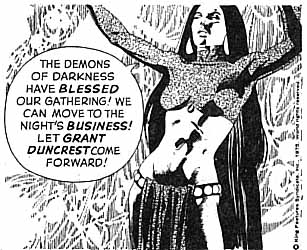 Times
change, tastes change, but sales and deadlines are constant.
Created as a response to the competition embodied in television and the
movies, the photo-realistic strip couldn’t match the explicit sex and
violence or narrative pace that became standard in other media and
slowly began to die because the form required such relentless work on
the part of the cartoonist. Newspapers were fighting their own battles
for readers. Finally, declining syndication in the 70s meant less space,
both in prep and reproduction, which made the fine detail impossible,
even for the best artists. Times
change, tastes change, but sales and deadlines are constant.
Created as a response to the competition embodied in television and the
movies, the photo-realistic strip couldn’t match the explicit sex and
violence or narrative pace that became standard in other media and
slowly began to die because the form required such relentless work on
the part of the cartoonist. Newspapers were fighting their own battles
for readers. Finally, declining syndication in the 70s meant less space,
both in prep and reproduction, which made the fine detail impossible,
even for the best artists.
The form was strong enough to weather
many of the changes story strips endured, but not all. Some strips
continued on, notably Rip Kirby, Juliet Jones, and Apartment
3G. Others, like Ben Casey or On Stage, became a
pleasant yet distant memory.
They are largely forgotten in most comic
art surveys. But like the well-crafted song, the work endures and
deserves a closer look.
|
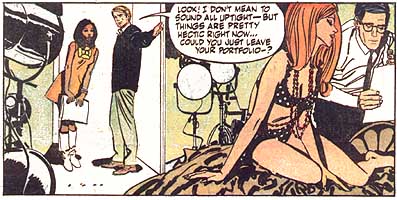
|
After the war, photo magazines featuring pin ups exploded in
popularity as well as their previously under-the-counter cousin,
the figure art photography periodical. These magazines before
Playboy not only offered a wealth of poses for swipes, but
helped fuel an amateur photography craze. From 1956 and Fawcett
Publications #318, Russ Meyer gives advice on tastefully
photographing well endowed women, including a demure (and
pregnant) Diane Webber. Pat Tourret and Jenny Butterworth's
Tiffany Jones was a true child of the 60s, in its heyday as
emblematic of the British Invasion in Pop Culture as Twiggy and
mini skirts. It was no surprise that Tiffany was a model.
Tourret herself was a product of the British romance and fashion
industry, but the pacesetters overseas were young Spanish
artists like Jose Gonzalez, Esteban Maroto, and Jorge Longaron.
Longaron's
Friday Foster, the first female black lead character in
American comic strips and an aspiring photographer as well, gave
America a brief glimpse of the Spanish take on the legacy of the
photo-realistic era and the changing roles for women the 70s
would bring. |
|
